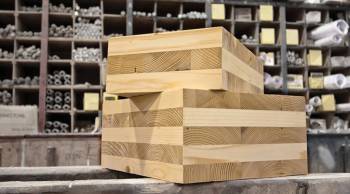The history of the skyscraper
Share Now on:
The history of the skyscraper
Kai Ryssdal: Consider for just a moment the modern skyscraper. On the face of it, not much more than concrete, glass and steel. Underneath, though, they’re something when they’re done right. The Chrysler Building in New York. The World Financial Center in Shanghai. The Burj Khalifa in Dubai, the tallest building in the world. They transform skylines and help define what it means to be a modern metropolis.
But once upon a time, they were just places for people to work. Kate Ascher traces that history in her new book, “The Heights: Anatomy of A Skyscraper.” Welcome to the program.
Kate Ascher: Good to be here.
Ryssdal: Do me a favor and define ‘skyscraper’ for me.
Ascher: Skyscraper is sort of an arbitrary definition. There’s actually organizations of people who, you know, are defining it.
Ryssdal: Really?
Ascher: Yeah.
Ryssdal: Why?
Ascher: Once you get up above 500 feet, you’re usually talking about a skyscraper. Once you get beyond 1,000 feet, some people refer to them as super tall. If you go up to the new Trump building in Chicago, you’re right out there with the tops of the skycrapers from a couple generations ago, and they are really magnificent on the top. You really get a feel for where the word skyscraper came from.
Ryssdal: These things also used to be uniquely American in construction, right? We used to be the place where you went to build a tall building.
Ascher: I would say for 100 years we were. Europe’s never liked tall buildings. It was really about New York and Chicago pretty much until the middle part of the 20th century. The biggest skyscrapers originally were built by corporations to show how wealthy and how powerful they were. But certainly in terms of Asia and China, there is that sense — particularly in the Middle East — that we are going to build the tallest building, because they want to show they can. So it really is a flexing that kind of muscle.
Ryssdal: So what is it for you, then, since you’re the trained observer here — what is it that makes one of these buildings more than just an office tower?
Ascher: It depends. Some of them are literally more than an office tower. I mean, some of them are office towers, they’re hotels, they’re people’s homes, they’re shopping districts, they’re schools. So most of the ones that are being built today are not just office towers. Partly it’s the architecture; partly it’s what it does for the street, so it’s a function of urban design; and in some places, it’s partly what it does for the skyline, tall is considered green and tall is considered 21st century.
Ryssdal: Let me call you on that a little bit and I know your answer’s going to be, but you have to talk about the Freedom Tower in New York City, or as it’s called, One World Trade Center or something. I mean, there’s more to it than just building this building now, right?
Ascher: Well there’s a whole lot of history here. I mean, it’s now no longer the Freedom Tower; it’s One World Trade Center again. And it’s actually a very beautiful building; I work right across the street from it, so I’ve been watching it go up. There are people who disagree and think you shouldn’t have put that much office space back on that site. But as a skyscraper, it’s got a lot of integrity.
Ryssdal: So it used to be corporations that built these things and then they put their names on them. Who builds them now?
Ascher: Well, you still have some corporations that are building corporate headquarters, but they’re usually not owning the building and they’re usually tenants. So they’re usually built by developers to make money, so they’ve managed to acquire a site. And generally, if you’re going to build a really big building, you’ve got an anchor tenant who’s going to take part of it. Otherwise, you’re putting too much money at risk in a market where you may not be sure that you’re going to have somebody to rent it once it’s done.
Ryssdal: So we’ve got the Library Tower here in Los Angeles — which is, I will add for trivia buffs, the tallest building in this country west of the Mississippi. It is not actually the Library Tower, right? It’s U.S. Bank Tower. I mean, there’s a whole naming rights thing going on here.
Ascher: Right. Well usually if you’re an anchor tenant and you’re taking a lot of space in a developer’s building, one of the things you may want for that is to name the building, or to have your name on the top of the building, or there is other things that you can get.
Ryssdal: To be seen from miles around.
Ascher: That’s right. It’s good advertising from the sky.
Ryssdal: Kate Ascher’s new book is called “The Heights: Anatomy of a Skyscraper.” Kate, thanks a lot.
Ascher: Appreciate it, thanks.
There’s a lot happening in the world. Through it all, Marketplace is here for you.
You rely on Marketplace to break down the world’s events and tell you how it affects you in a fact-based, approachable way. We rely on your financial support to keep making that possible.
Your donation today powers the independent journalism that you rely on. For just $5/month, you can help sustain Marketplace so we can keep reporting on the things that matter to you.


















